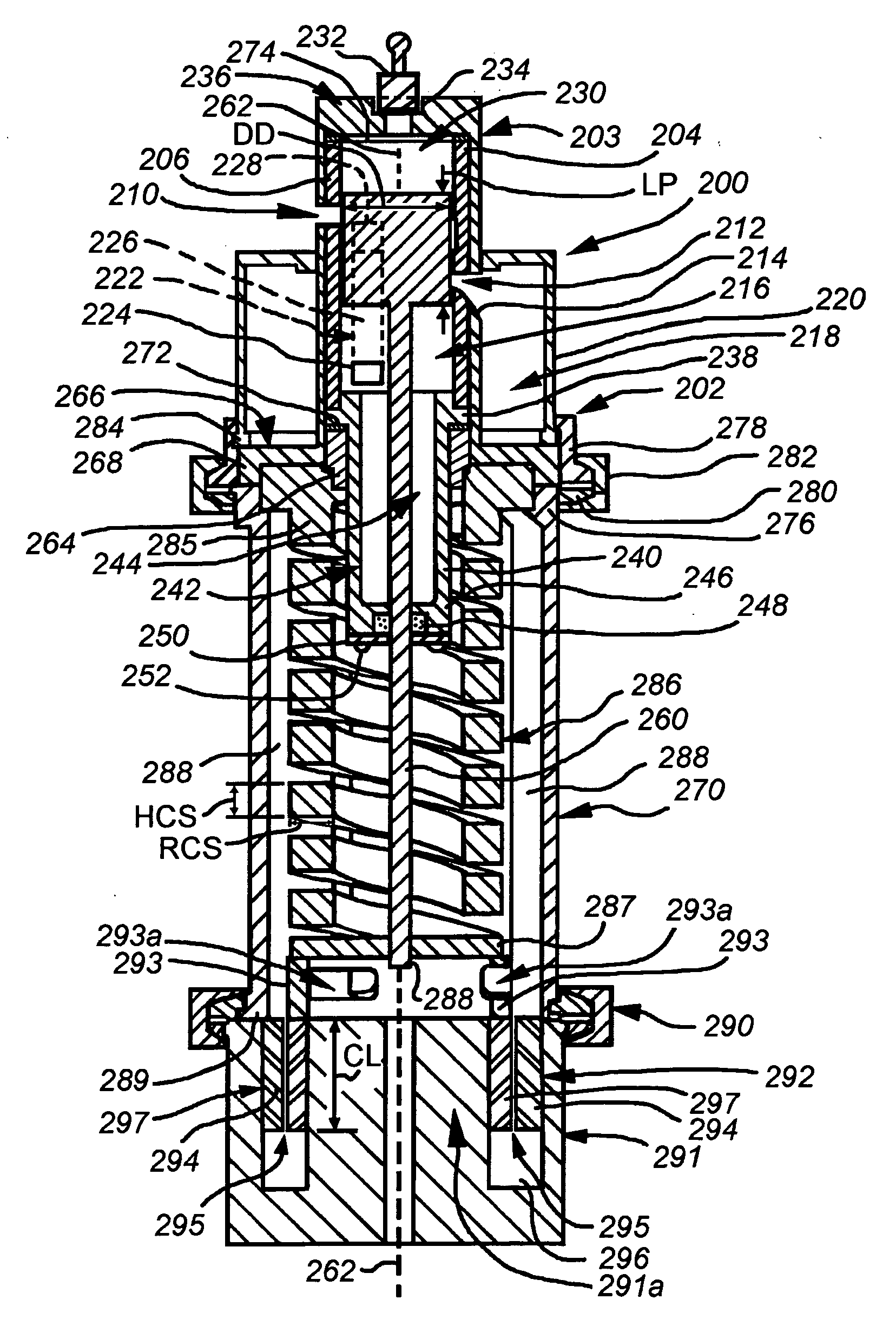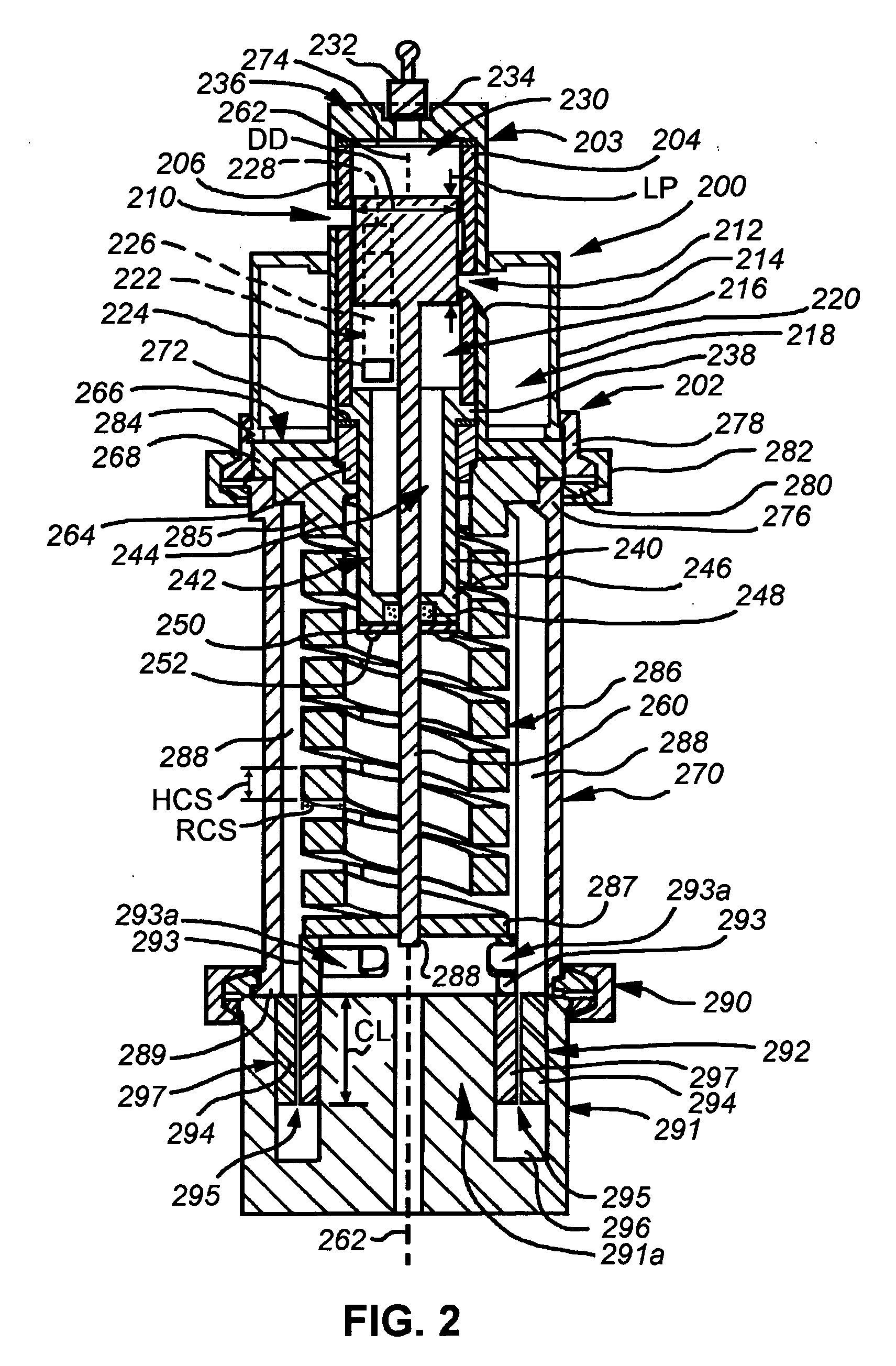Power generating system
a power generation system and power source technology, applied in the direction of mechanical energy handling, mechanical equipment, machines/engines, etc., can solve the problems of limited power, heavy battery pack, short duration, etc., to reduce the lateral movement of the mice generator, dampen the sound, and control the effect of excess vibration
- Summary
- Abstract
- Description
- Claims
- Application Information
AI Technical Summary
Benefits of technology
Problems solved by technology
Method used
Image
Examples
Embodiment Construction
[0044] A. Operating Cycle of a MICE Generator
[0045] To further illustrate the operative principles of the MICE generator of this invention, reference is first made to FIGS. 1A-1D, which illustrate the operation of a typical two-cycle engine, such as those found in a small-scale model airplane.
[0046]FIG. 1A shows the cylinder head 102 of a two-cycle engine with a ringless piston 104 that drives a piston rod 105, shown at the top of its stroke. A glow plug 106 provides the ignition source during startup, and optionally during steady operation, to existing fuel / air mixture that is compressed in the space of the upper chamber 126 between the piston 104 and the top 107 of the cylinder head 102. As the piston 104 moves toward the top of the stroke, fuel-vapor / air mixture (represented by arrow 108) is contemporaneously drawn into the lower chamber 110 via an inlet port 112.
[0047]FIG. 1B shows the piston 104 after completion of the power portion of the expansion stroke that delivers powe...
PUM
 Login to View More
Login to View More Abstract
Description
Claims
Application Information
 Login to View More
Login to View More - R&D
- Intellectual Property
- Life Sciences
- Materials
- Tech Scout
- Unparalleled Data Quality
- Higher Quality Content
- 60% Fewer Hallucinations
Browse by: Latest US Patents, China's latest patents, Technical Efficacy Thesaurus, Application Domain, Technology Topic, Popular Technical Reports.
© 2025 PatSnap. All rights reserved.Legal|Privacy policy|Modern Slavery Act Transparency Statement|Sitemap|About US| Contact US: help@patsnap.com



